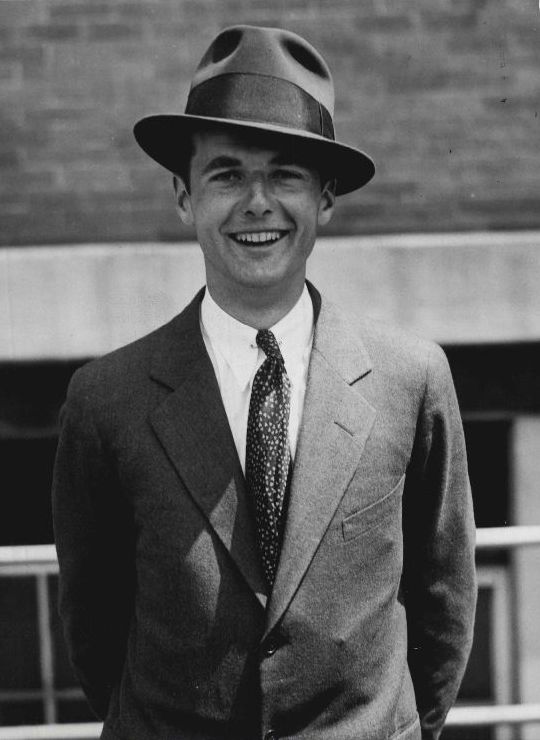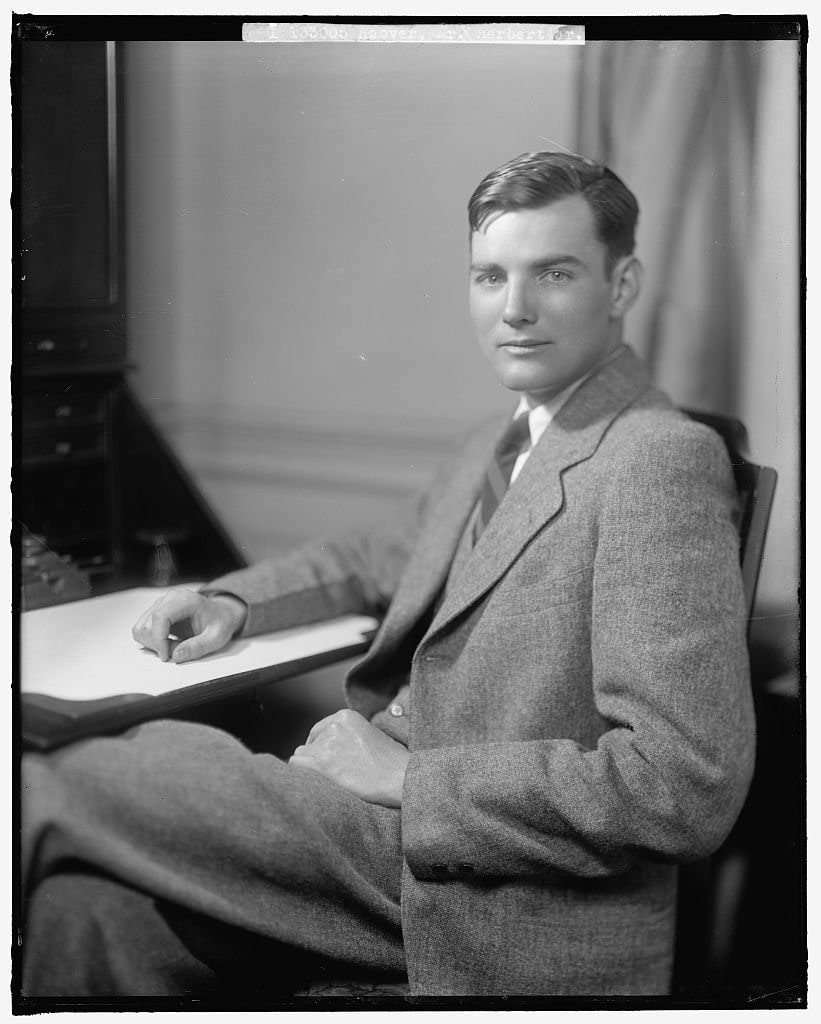On February 10, 1899, in Monterey, California, Herbert and Lou Hoover married. Following that, Lou accompanied her husband on his trip to Asia. Herbert, Jr. and Allan, the couple’s two grandchildren, were born to them.
Herbert Jr. and Allan, who were born before their father’s political career began, were more affected by their father’s life as a worldwide businessman and humanitarian than by his later career as Secretary of Commerce and President of the United States in Washington, D.C. Both of them had successful careers, but neither was as well-known as their father.
Herbert Charles Hoover
Herbert Charles Hoover was born on August 4, 1903, in London. He was given the names Herbert Clark Hoover and Charles Delano Henry in honor of his father and maternal grandfather, but he was known as Herbert Hoover Jr. throughout his life. Herbert Sr. was known as “Bert” to their close friends and relatives, and Herbert Jr. was known as “Herb.”
Over dinner, his family discusses science and engineering. It prompted him to engage in more sophisticated “play,” such as constructing a dam across a nearby creek, studying wireless telegraphy, and building an automobile from the ground up. He also worked as a water boy for the Stanford football team to supplement his income. He was fiercely proud and self-reliant, and he never took advantage of his family’s fortunes or social status.
During World War I, Hoover, Jr. was a member of the boy scouts, sold Liberty Bonds, including one for $25,000, and received a special award from Ambassador Walter Hines Page in London for exceptional service. Hoover Jr. was always interested in amateur radio as a child. In 1918, a severe influenza case left him deafened, but the scientifically inclined adolescent built himself a hearing aid.
Hoover, Jr. attended Stanford University, where he studied engineering and earned his B.A. in 1925, following his parents’ footsteps. In 1925, Hoover Jr. married Margaret Eva Watson. Margaret Ann “Peggy” Hoover Brigham was born in 1926, Herbert “Pete” Hoover III was born in 1927, and Joan Ledlie Hoover Vowles was born in 1930.
He enrolled in Harvard Business School and worked for the Guggenheim Fund for the Development of Aeronautics, researching the new aviation industry’s economic aspects. His father had become a household name by that time, and he had been elected president in 1928. His eldest son and namesake, who had a reputation for being modest and studious, became even more determined to succeed independently. He turned down several lucrative works offers after graduation in favor of a low-paying job as a radio technician with Western Air Express.
Despite his rapid advancement within the business, Herbert Jr.’s career was cut short in 1930 due to tuberculosis. Hoover Jr. founded United Geophysical Company in 1935, which used radio technology for oil exploration, and Consolidated Engineering Corporation in 1937, which manufactured scientific instruments for United Geophysical.
In 1954, President Eisenhower nominated Hoover Jr. as Undersecretary of State after being impressed by his diplomacy. Because Dulles was frequently sick, Hoover Jr. assumed Acting Secretary of State on several occasions. Many mocked him for his early decisions, but he had established himself as a competent Dulles stand-in by the end of his term. In 1957, he left the State Department and went to the private sector.
Despite having lived a fascinating and noteworthy life, no books have been written about Hoover Jr., and the biographical information that has been published is often inaccurate. Regrettably, he left almost no documents behind, leaving historians with nothing to work with. After suffering a stroke, Hoover Jr. died on July 9, 1969, in Pasadena, California.
Allan Henry Hoover
Herbert and Lou Hoover’s youngest son was Allan Henry Hoover. He was born in London, England, on July 17, 1907. He majored in economics at Stanford University, like his parents and older brother, and then went on to Harvard Business School. He worked in agriculture, mining, and finance, and he remained in Connecticut for many years.
In contrast to his older brother, he was characterized as studious but quirky. He was fascinated with animals as a child and had a zoo full of them. A family friend gave him two alligators when he was fourteen. The Hoovers were living in Washington, D.C. at the time, and the kid tried to keep the gators in bathtubs overnight. He then moved them to a fish pond outside the house. They became too large and probably ferocious to hold, so he donated them to the zoo and began collecting stamps.
The adventures went on and on. Allan went to Europe alone in 1926, when he was sixteen years old. He purchased a rattletrap car from a small garage in Rome and drove it around the continent while he was there. Following in the footsteps of his family’s entrepreneurial spirit, Allan rebuilt the car and sold it in Paris after completing his journey, using the proceeds to pay his way home. He went on to Stanford University to study economics, where his good looks and manners gave him the nickname “prince charming” among his female classmates.
Allan went to Harvard Business School after graduation, following in his older brother’s footsteps. During his breaks, he drove to the White House to see his father, the president at the time. Allan became known for throwing parties with jazz bands that enthralled the “younger set” while he was there.
Allan Hoover was a member of the Los Angeles Bachelor’s Club before marrying Margaret Coberly in 1937. Allan Hoover Jr., Andrew Hoover, and Lou Henry Hoover were their three children.
In West Branch, Iowa, Allan Hoover took the lead in restoring his father’s hometown. In 1935, he bought the family’s birthplace cottage. He served as a liaison between the Hoover family and local West Branch groups on issues such as the cottage’s preservation. It also involved the evolution of the Herbert Hoover National Historic Site. Then, the eventual building of the Herbert Hoover Presidential Library-Museum, where he donated several collections of personal and family documents, which continue to provide researchers with priceless insights into their parents’ lives. He was also involved in the Hoover Institution on War, Revolution, and Peace at Stanford University, the Herbert Hoover Foundation, and the Boys Clubs of America, all of which were important to his father.
He died on November 4, 1993, and was buried in West Branch near his paternal grandparents.
US Presidents | ||


